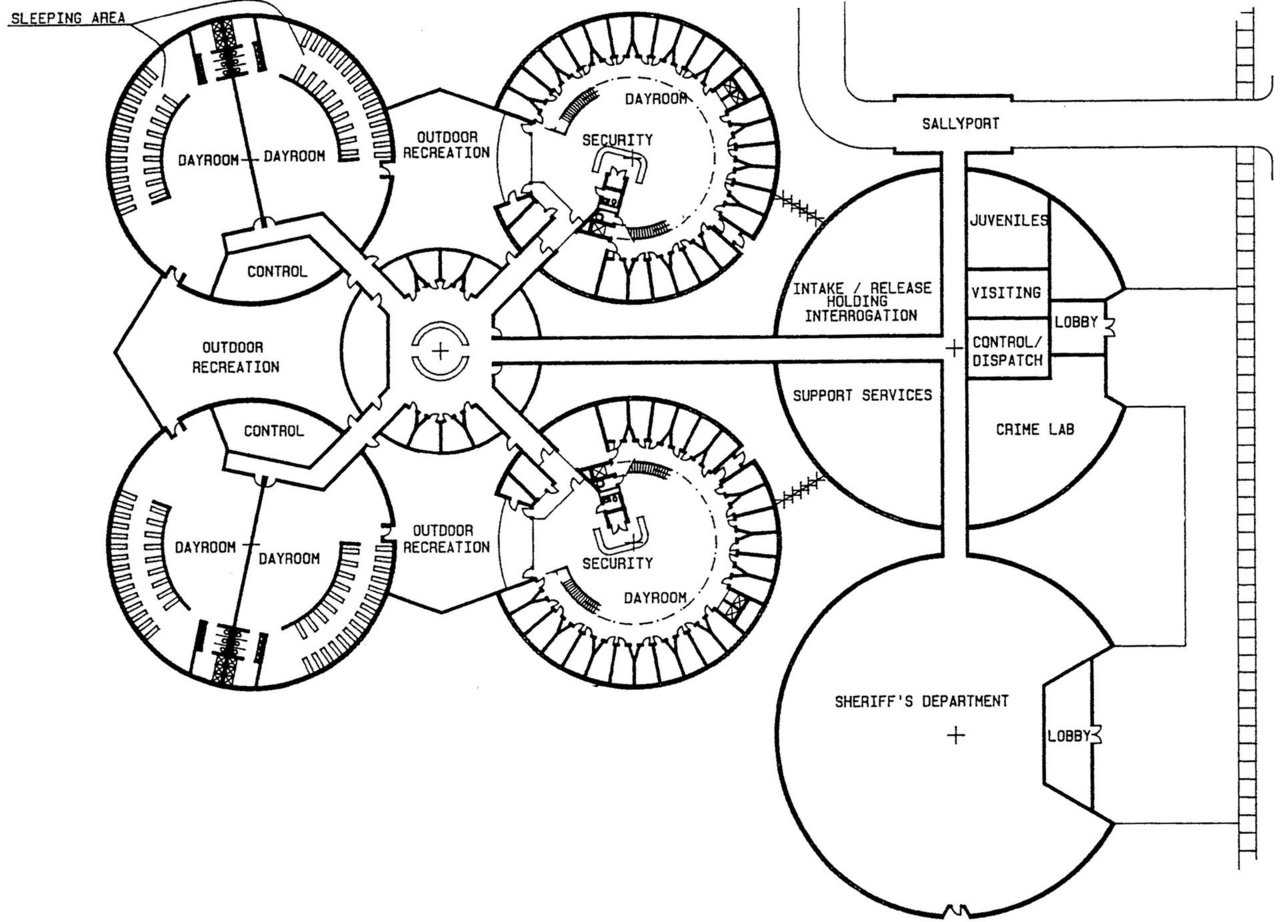
Interior layout — The use of space is optimized by central common areas surrounded by cells. A prison or jail built “in the round” simply functions more efficiently as an incarcerating facility. Sight lines are clear so there’s a better view of all that goes on. Sprayed concrete is much tougher than conventional concrete. The amount of heating and cooling is vastly reduced. But the speed of construction is substantially increased, so that time from plan to finish is really quite rapid.
Monolithic Domes Make Perfect Jails and Prisons
Can a Monolithic Dome be designed as a prison or jail? The answer is an emphatic Yes. In fact, if any buildings need and ought to be Monolithic Domes, they are jails and prisons.
Consider just a few of the advantages of a Monolithic Dome over conventional designs:
- Monolithic Domes cost less to build, operate, maintain and vastly less to heat and cool.
- The domes’ interiors can be open and clear, free of supporting pillars, columns and walls that create hiding places. That openness provides clear views of all activities at all times. Those better sight lines translate into less staffing, and that’s where big money is saved.
- A Monolithic, steel-reinforced concrete shell is impenetrable. Inmates simply cannot chisel or knife their way through it.
What we learned
About twenty-five years ago, Monolithic devoted a lot of time and money to jail and prison design. We knew that incarcerating facilities should be totally fire-safe and impenetrable from both the outside and inside.
Through research, we also learned that few jails and prisons are insulated. Apparently, insulation was skipped to cut costs — an unnecessary forfeiture in a Monolithic Dome where the opposite is true. Rather than increasing costs, a dome’s insulation holds utility costs to a minimum.
Larry Byrne, our designer, traveled extensively inspecting facilities and talking with prison officials to learn what was needed. Larry then began planning jails and prisons of various types and sizes.
But nothing happened. In 1980, we did not have a serious number of completed domes that we could point to, and none were prisons. So our plans met with the usual resistance. Conventional designs were the norm that people were used to, and they didn’t want to change or even listen to some far-out, new ideas.
What we did
But we did design a full, 1200-bed facility for the State of South Carolina, that, for political reasons, never got built. We designed other facilities as well. All of that information is still valuable, practical and doable. We can still build jails for less – a lot less.
One of our more interesting experiences with prison design happened in 1986. A California Superior Court Judge ordered the County of Santa Clara to buy a Monolithic Dome prison. He made that decision after hearing on-the-stand testimony from California prison officials. A Prison Director testified that a Monolithic Dome jail looked “just fine” to him, and the Santa Clara County Sheriff said that he had done a lot of investigating of Monolithic Domes and felt that they would serve the County’s needs well.
Unfortunately, supporters of a conventional jail plan got the judge’s decision overturned. Two years later, the County Sheriff called me. He said, “I thought you should know that we now have our new jail. What you had promised to build for $6.5 million in eight months, cost us $16 million, took two years and does not have any of the improvements you would have incorporated.”
The right time for Monolithic prison designs
So why haven’t we pushed harder on jails? It’s my wife’s fault. One day Judy said to me, “David, do you really want your Monolithic Domes best known as prisons and jails?” I didn’t.
Till then, we had been constructing bulk storages and a few designed buildings. Had we started with prisons and jails, we probably would not have been able to get into the school and church market.
But now that Monolithic is somewhat established in church and school design, incorporating prison design into what we offer should not strike potential clients as “weird.”
How much?
After reading this, many people will want to know: How much? The answer: Substantially less! If you base the pricing on what Monolithic is doing with schools and churches, rest assured that we will design and construct prisons for substantially less than the price at which they are currently being built. And ongoing costs for prison staffing, utilities and maintenance will also be less.
Download a FREE information pak about Monolithic Jails and Prisons Jails.
Updated: May 26, 2009
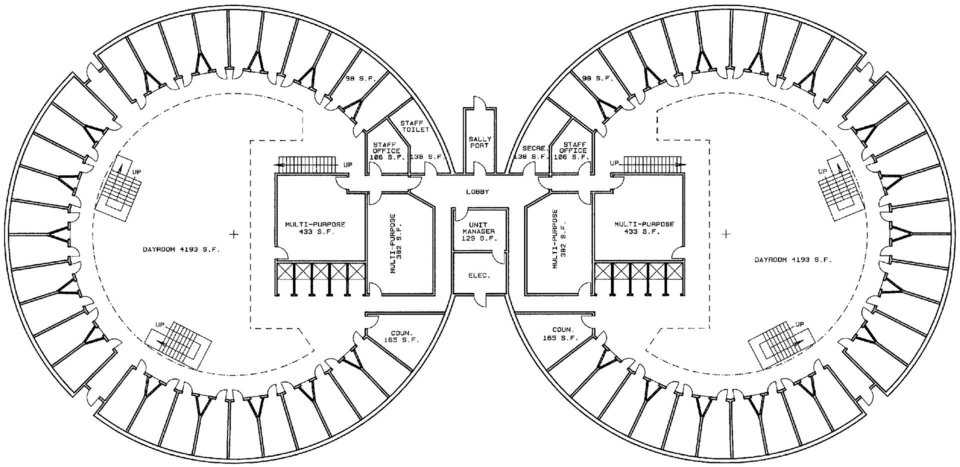
Pods — Possible design for a typical cell block. Many of these “pods” could be joined together as need for more room increased. After reading this, many people will want to know: How much? The answer: Substantially less! If you base the pricing on what Monolithic is doing with schools and churches, rest assured that we will design and construct prisons for substantially less than the price at which they are currently being built. And ongoing costs for prison staffing, utilities and maintenance will also be less.
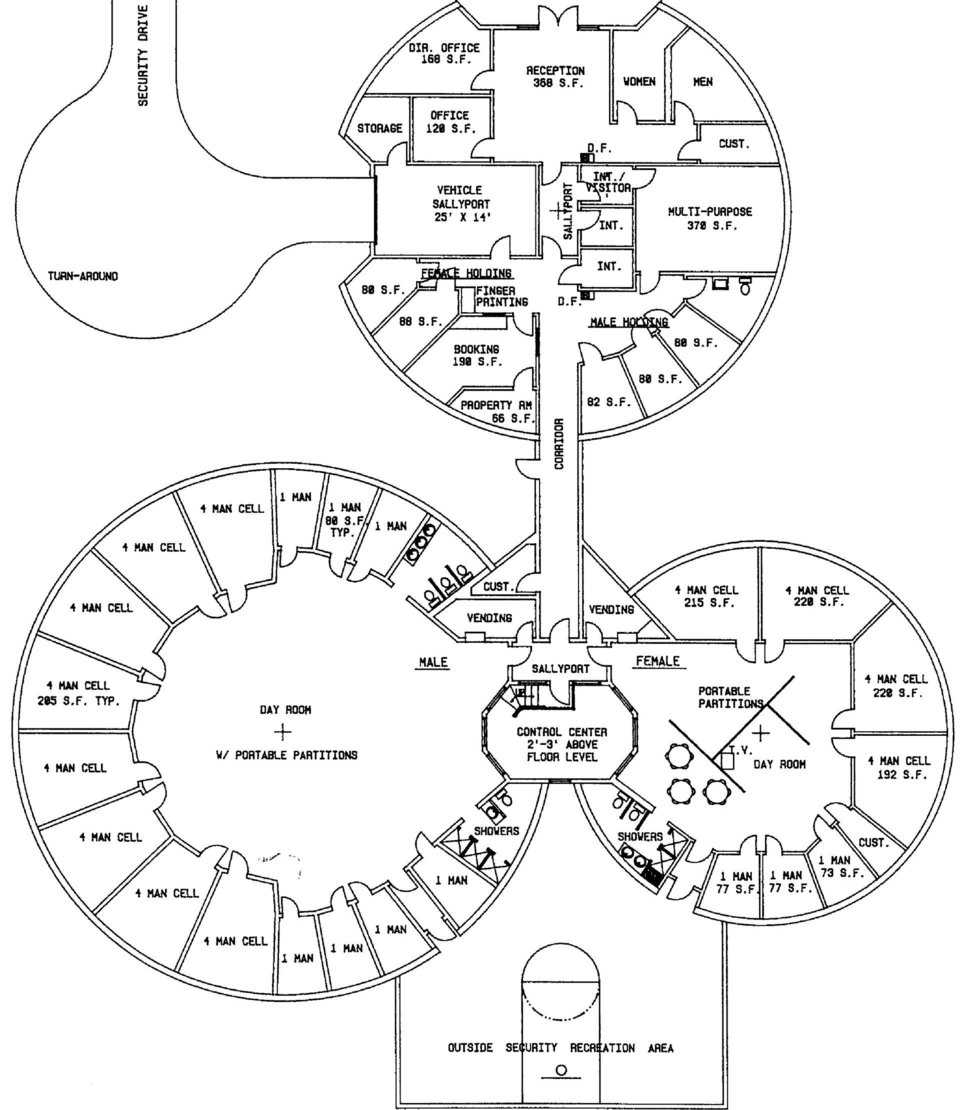
Youth Detention Center — Some twenty-five years ago, Monolithic devoted a lot of time and money to jail and prison design. We knew that incarcerating facilities should be totally fire safe and impenetrable from both the outside and inside. Through research, we also learned that few jails and prisons are insulated. Apparently, insulation was skipped to cut costs — an unnecessary forfeiture in a Monolithic Dome where the opposite is true. Rather than increasing costs, a dome’s insulation holds utility costs to a minimum.
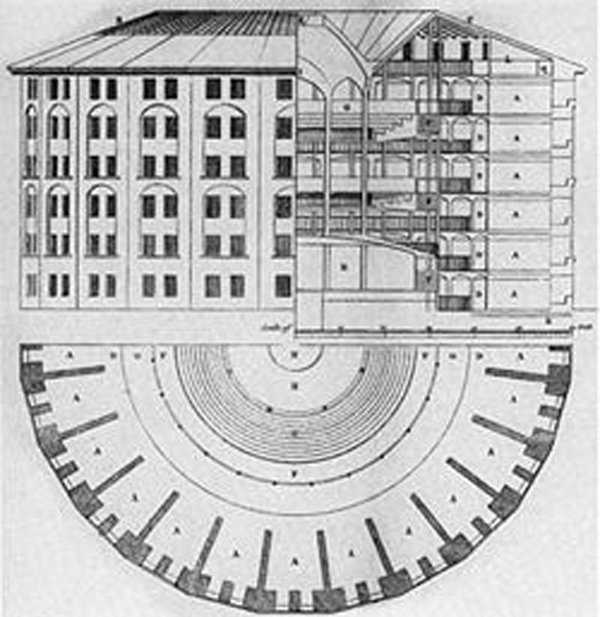
Conceptual drawing of the “Panopticon” - The concept of the design, by Jeremy Benthams, is to allow an observer to observe (-opticon) all (pan) prisoners without the incarcerated being able to tell whether they are being watched.
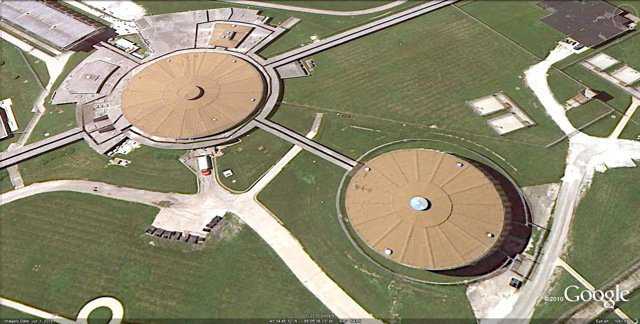
Stateville Correctional Center — Located in Joliet, Illinois.
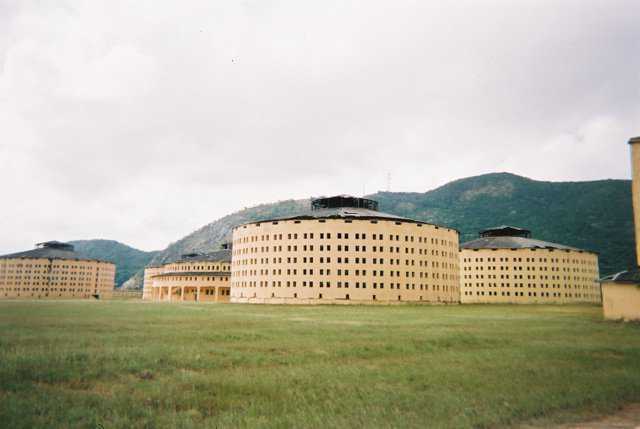
Presidio Modelo — An abandoned prison on the island of Juventud in Cuba
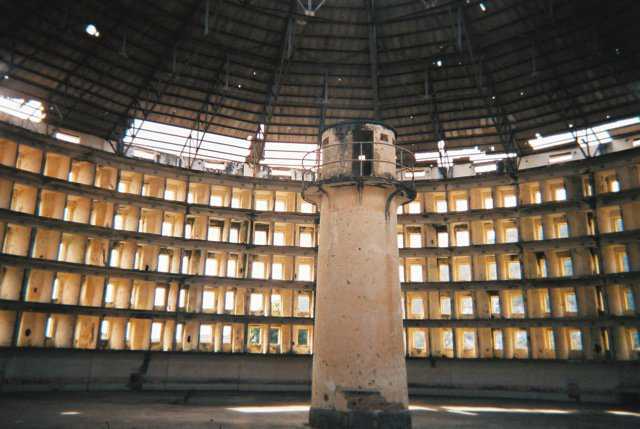
The Interior of the Presidio Modelo — The architecture incorporates a tower central to a circular building that is divided into cells, each cell extending the entire thickness of the building to allow inner and outer windows. The occupants of the cells are thus backlit, isolated from one another by walls, and subject to scrutiny both collectively and individually by an observer in the tower who remains unseen.
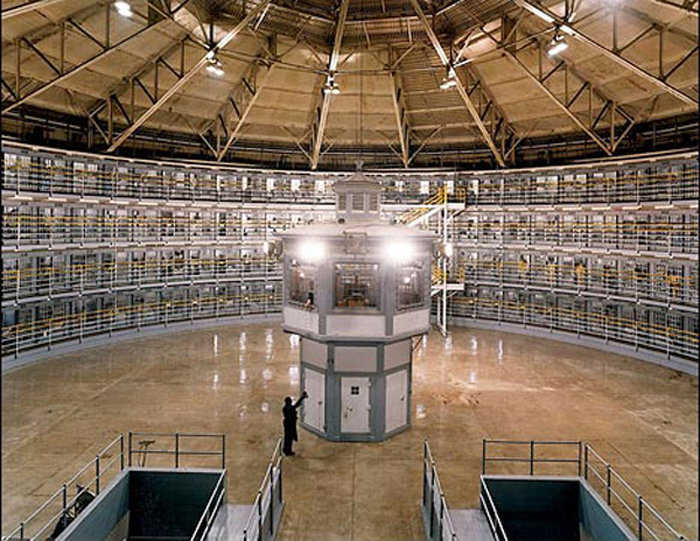
Interior of the Stateville Correctional Center — The Panopticon was intended to be cheaper than the prisons of his time, as it required fewer staff. As the watchmen cannot be seen, they need not be on duty at all times, effectively leaving the watching to the watched.